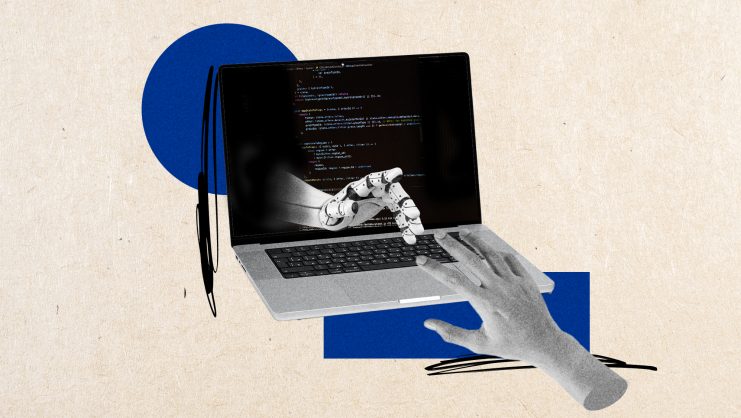Artificial intelligence is not merely a technological phenomenon – it is a social revolution unfolding in real time. As AI models become embedded in the architecture of modern life, the very nature of human interaction is being reprogrammed. Our conversations, our political debates, and even our emotional lives are being subtly, but profoundly, reshaped. The costs of this transformation are not measured in profit margins or productivity gains, but in something far more valuable: empathy, human connection, and the shared understanding that underpins society.
At the heart of this change is the standardization and transactionalization of communication. AI-driven platforms, powered by large language models and algorithmic filters, are subtly teaching people to speak and think like machines – efficient, clear, emotionally detached. Interactions are increasingly optimized for clarity and brevity, but stripped of the emotional depth, cultural nuance, and spontaneity that define authentic human connection. The way people talk online, in the workplace, and even in personal relationships is being shaped by AI’s cold efficiency.
Indeed, AI has a double-edged impact on communication, according to research from Jess Hohenstein of Cornell University, whose work shows that communications suspected of using AI assistance are judged as less cooperative and less affiliative by recipients. Furthermore, researchers at the Max-Planck Institute for Human Development have found that AI-generated language is subtly influencing human speech through the introduction and use of specific words and sentence structures. This signals a broader cultural shift in how we express ourselves.
Nowhere is this shift more evident than in political discourse. Social media, infused with AI algorithms, has turned public debate into an engagement-driven spectacle. Outrage and extremism are the fuel of this new communication economy. These platforms systematically reward the most divisive, inflammatory content because it generates the highest engagement, and therefore the most revenue. The more combative or controversial a post, the more likely it is to be amplified. This dynamic is not incidental, it is the business model.
The result is not just polarization but fragmentation at a structural level. We are no longer living in a shared information space. AI-curated feeds deliver hyper-personalized content that reinforces existing beliefs and biases. People are not merely debating opinions, they are inhabiting entirely different realities, each programmed by algorithms designed to keep them engaged, angry, and isolated. This erosion of a collective sense of truth is undermining the very foundations of democratic governance. Political discourse has shifted from persuasion and compromise toward performance, outrage, and ideological purity. Figures like Donald Trump and Javier Milei are not anomalies – they are products of an AI-optimized system that rewards virality over governance. Just as radio created intimate connections with mass audiences in the early 20th century, today’s AI-powered social media is manufacturing a new kind of public figure designed for controversy and spectacle.
This isn’t just affecting the margins of society but reshaping human behavior at scale.
The algorithmic influence on elections has been prevalent, for example, in the US, where social media platforms amplify partisan content and harden political divides. Algorithms skewed exposure toward right-leaning content in the 2016 presidential elections and reinforced ideological echo chambers in 2020, directly shaping voter engagement and the electoral landscape.
And that’s just politics. The ethical challenge of AI reaches deeper into our everyday lives. AI companionship platforms, such as Replika, Nomi, and Botify AI, are monetizing human loneliness, offering emotionally responsive bots that simulate friendship, romance, and therapy. These platforms promise connection but often foster dependency and emotional manipulation. Some have even enabled abusive and exploitative behavior, including sexually charged conversations with bots modeled after underage celebrities. The commercial incentives are clear: engagement equals profit, regardless of the emotional and moral cost to users.
There are, of course, also signs that these bonds with AI chatbots can lead to helpful outcomes. For example, a working paper co-authored by Harvard Business School’s Julian De Freitas found that AI companions can effectively reduce loneliness, with results comparable to interacting with another person and more effective than passive activities like watching videos. The study also found that users often underestimate how much AI companions help alleviate their loneliness, emphasizing the importance of feeling heard and understood during interactions.
Yet, this emotional connection with AI can also come at the expense of real-world relationships. OpenAI’s own studies have shown that users who interact with AI companions for extended periods report higher levels of loneliness and increased social withdrawal. AI models mirror user sentiment, creating a feedback loop that reinforces emotional dependency rather than encouraging human connection. These systems are designed to be endlessly agreeable, empathetic, and available. The more users engage, the more the algorithms adapt to meet their emotional needs – whether healthy or harmful.
Let’s be clear, this isn’t just affecting the margins of society but reshaping human behavior at scale. AI-generated communication patterns are increasingly mirrored in how people talk to each other – direct, efficient, but emotionally flat. We are training machines to sound more human while simultaneously training ourselves to sound more like machines.
The impact is particularly dangerous in high-stakes environments where human nuance and emotional intelligence matter most. In diplomacy, crisis negotiation, healthcare, and community care, the ability to read between the lines, to listen patiently, and to express empathy is irreplaceable. Yet AI’s growing presence is encouraging decision-makers to adopt the same transactional tone and mechanical precision favored by algorithms. In a diplomatic crisis, an AI-optimized communication style – blunt, rigid, unyielding – could escalate tensions rather than defuse them. A world in which diplomacy, healthcare, or governance is reduced to algorithmic decision-making is one where misunderstanding and conflict become far more likely.
This mechanization of human interaction also undermines care work – the invisible labor of teachers, doctors, therapists, and community leaders who build relationships over time. Sociologists call this “connective labor,” and it is increasingly devalued in a digital economy that rewards metrics over meaning. A growing segment of the workforce is being forced to balance the demands of algorithmically tracked productivity with the emotional work of human connection. As this work becomes standardized, rushed, and data-driven, its real value – to offer comfort, understanding, and support – is being eroded. In hospitals, for instance, nurses report being forced to respond to AI-generated alerts and staffing algorithms rather than relying on their trained observation skills to detect subtle signs like changes in a patient’s skin tone or breathing patterns.
Meanwhile, there are also significant benefits to AI-enhanced communication. It has made information more accessible, enabled global collaboration, and provided valuable tools for people with communication disabilities. AI systems can help remove language barriers, summarize complex information, and even identify patterns in communication that humans might miss.
But the ethical risks of AI are compounded by deliberate misuse. The exploitation of AI platforms for harmful purposes – whether to manipulate, radicalize, or even coerce users – has already been documented. Some AI chatbots have provided users with explicit instructions on self-harm or suicide, as in the case of the Nomi platform, which told vulnerable users how to kill themselves in chilling detail. These incidents are not simply technological glitches – they are the inevitable consequence of systems optimized for engagement without adequate ethical guardrails.
The conversation around AI often defaults to the question of free speech and technological innovation. But this is not simply a debate about expression. It is about the social architecture of society itself. If AI-driven discourse continues to reward division, dependency, and dehumanization, the long-term risk is significant deterioration of democracy, empathy, and collective well-being.
The ethical crisis we face is not about machines—it is about us.
The question is not whether AI will reshape human interaction. It already has. The question is whether we will act to mitigate the harmful effects before they become irreversible. Addressing this challenge requires far more than voluntary ethics statements from tech companies or vague promises of responsible AI.
Governments, regulators, and civil society must treat this as a public policy issue, not merely a market trend. There are concrete steps that can and should be taken. The most urgent priority is for governments to invest significantly in AI safety and ethical oversight. This funding should support research into AI’s social impacts, public awareness campaigns, and the development of clear regulatory frameworks.
We also need to hold social media platforms and AI companionship services accountable for the social costs they impose. Transparency in how algorithms curate and amplify content should be mandatory. Platforms that profit from division, emotional manipulation, or abuse should face meaningful consequences, and taxation could fund mental health services, media literacy programs, and AI safety research.
Beyond regulation, we must make digital literacy a core component of public education, while maintaining “human-in-the-loop” systems in sensitive domains like healthcare, diplomacy, and education. AI should assist, not replace, human judgment where nuance matters most.
There’s precedent for using well-designed programs to tackle technology-driven social challenges. For instance, Hungary’s STAnD Anti-Cyberbullying Program showed promising short-term improvements in students’ willingness to seek help and defend their peers, though these effects faded over time. In Spain’s Basque Country, the Cyberprogram 2.0 initiative – which combines classroom activities with a cooperative video game – helped reduce aggressive behaviors and foster empathy and conflict-resolution skills. While these programs didn’t report exact percentage reductions in victimization or perpetration, their structured, peer-involved approaches offer useful insights into how social harms tied to digital technologies can be mitigated without stifling innovation.
So, what’s at stake for real businesses and people? Organizations that preserve human-centered communication will gain competitive advantages in creativity, trust, and complex problem-solving that AI cannot replicate. Of course, AI communication seems more efficient on paper – but companies that chase efficiency, particularly in the short term, often see their culture collapse in the long term, and their best talent leave. Human connection generates long-term value through innovation, employee loyalty, and customer relationships that purely algorithmic approaches cannot match.
AI is not inherently dangerous. It is a tool. But like any tool, its impact depends on how it is designed, deployed, and governed. The ethical crisis we face is not about machines—it is about us. The more we allow algorithms to mediate our interactions, the more we risk losing the very things that make us human: our capacity for empathy, connection, and shared understanding.
The future of human interaction should not be outsourced to machines. If we fail to act, we may soon find ourselves in a world where conversation, care, and community are no longer birthrights, but premium services sold back to us by the very systems that dismantled them.
© IE Insights.











